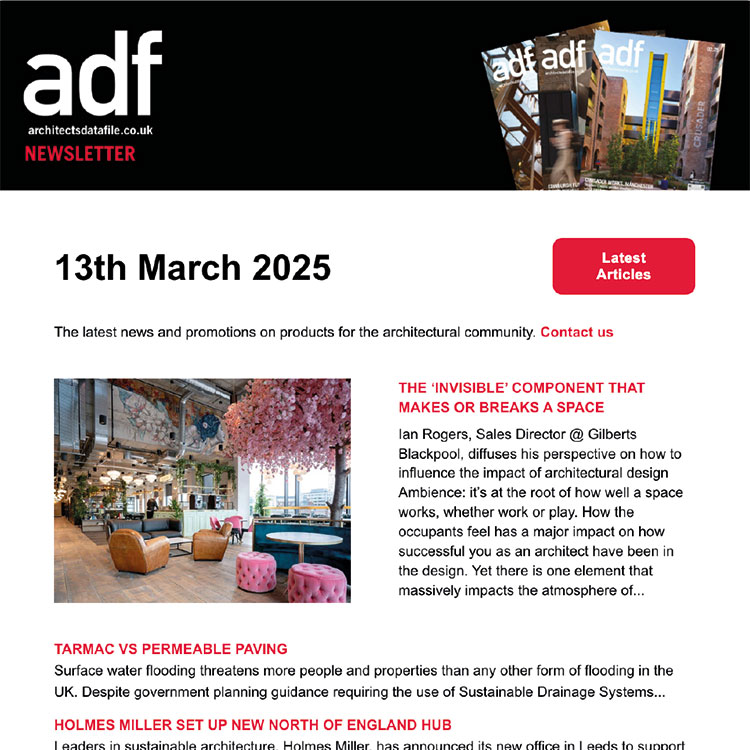Walsingham House – a prominent 1930s office building in the City of London’s Trinity Square Conservation Area – has undergone an extensive structural renovation by John Robertson Architects (JRA) for KHI Holdings Group
Originally designed by Howard & Souster in 1928-29, the building is defined by a classical Portland stone facade and sits on the corner of Crutched Friars, Seething Lane and Pepys Street, with the Grade I-listed St Olaves’s Church and the Grade II* listed Trinity Square directly adjacent.
The practice infilled the existing lightwell with new core facilities to create clean, practical floorplates which incorporate flexible workspaces and Grade A office accommodation suitable for modern occupiers. Two new levels have been added and the building’s overall sustainability credentials, energy efficiency and accessibility has been improved, with the building expected to recieve BREEAM ‘Excellent’ certification.
The original pitched roof has been removed, while two new levels (the eighth and ninth floors) are set back to respect the scale of the adjacent buildings on Pepys Street and Seething Lane. The new cladding carefully blends with the existing Portland stone facade, cornice line and original fenestration of the floors below.
The three uppermost floors boast new private terraces with panoramic views of some of London’s most notable landmarks. At ground level, the existing stone portico has been retained and the entrance enhanced by JRA to provide a fully accessible entrance leading to a contemporary open-plan reception workspace, featuring original artwork by Christian Bahr. Two new office units have also been created at ground level, with flexibility to be converted into future retail units if required.
JRA has respectfully reworked the building’s classical Italianate Portland stone facade, while new decorative metal panels evoke Art Deco stylistic touches. This adds embellishment details and relief to the spandrel panel on the top floor and visually links the top and base of the building. The existing stonework was also cleaned and any existing defects repaired.
New high-performance glazing replaces the previous single-glazed windows, maximising daylight within the office spaces and reducing the need for artificial lighting, while limiting solar gain and energy consumption. Significant archaeological findings were uncovered during the project, originating from the Roman, medieval and post-medieval periods. This includes the remains of a late 18th-century basement that formed part of the East India Company warehouse and once covered 70 per cent of the site. Approximately 20 different skeletons were also recovered, predominantly dating from the post-medieval period when part of the site existed as the churchyard to St Olave’s Church on Hart Street. A quantity of Roman material was discovered, including several copper alloy coins.
Festus Moffat, director, John Robertson Architects, says: “The transformation of Walsingham House is an example of an approach we call ‘contextual civic modernism’.
Our work to refurbish, extend and upgrade the existing building is part of JRA’s wider aim to preserve the historic fabric and character of our cities, whilst producing contemporary buildings that meet the requirements for a workplace in the digital age.”
Nicolas Fu, Chief Investment Officer, KHI Holdings Ltd, adds: “We are pleased that JRA were able to deliver our goal of both upgrading and expanding Walsingham House to Grade A specifications, whilst importantly retaining the building’s unique historical characteristics.
This challenging project could not have come to fruition without the vision and diligence of Festus Moffat and his project team, and we hope that tenants, visitors and neighbours alike are delighted with the result.”






